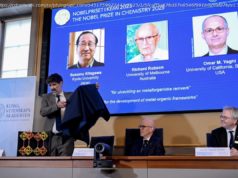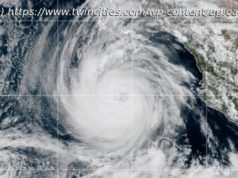We fuel them, we build houses by them, we ignite them.
Raging infernos in California are burning through shrub land and neighborhoods while inching perilously close to San Francisco and Los Angeles.
This year is shaping up to be one of the state’s worst fire seasons ever, as windswept flames have scorched more than 214,000 acres and caused at least 40 deaths, making last week the deadliest week for California wildfires on record.
At the same time, communities in the Bay Area are now shrouded with the worst air pollution they’ve ever measured, yet another threat to health from the fires.
Though seasonal wildfires are a natural occurrence in the Golden State, humans are making them worse and increasing the harm from them every step of the way.
On Saturday, firefighters were working across the state to contain 16 large fires that have already destroyed at least 5,700 homes and businesses. The Tubbs fire in Napa and Sonoma counties alone killed 22 people, making it one of the deadliest wildfires in California history.
You can view a map of current wildfires in California below:
The California Department of Forestry and Fire Protection says that while some of the fires that were raging last week are now contained, several are still barely contained. And firefighters are still concerned about shifting winds that could drive the flames in new directions, putting more Californians at risk.
“Personally, I think it will be one of the worst disasters in California history,” Sonoma County Sheriff Robert Giordano told a town hall in Santa Rosa.
For California, this may be just the beginning of a mounting disaster as stiff, dry air currents pick up throughout the state and many more combustible acres lie in the fires’ path.
It’s also just the latest unfolding tragedy in what has already been an epic fire season across the United States, burning through more than 8.5 million of acres of land and sending choking smoke throughout much of the West.
The California fires stretch the definition of “natural disaster” since human activities have exacerbated their likelihood, their extent, and their damage. Deliberate decisions and unintended consequences of urban development over decades have turned many parts of the state into a tinderbox.
This year’s blazes particularly stand out because of how close they are to suburbs and major cities.
“When we get wildfires close to residential areas, that’s what makes them extraordinary events,” said Heath Hockenberry, fire weather program manager at the National Weather Service. It’s also getting increasingly hard to keep people at a safe distance from the embers.
Harrowing scenes of flames and smoke have emerged, like this video from Santa Rosa, 55 miles north of San Francisco:
Much of California is naturally hot, dry, and prone to fires for parts of the year. But the state’s population is growing, leading to a significant overlap between the areas of high fire risk and areas with a growing population density, as you can see in these maps from a 2014 study of population trends in California out to 2050.
The study projected that by 2050,645,000 houses in California will be built in ‘very high’ wildfire severity zones.
“We are definitely seeing [construction in fire-prone regions] happen more and more: 95 percent of the population of the state lives on 6 percent of the land,” said Lynne Tolmachoff, a spokesperson for the California Department of Forestry and Fire Protection.
Californians are drawn to views of mountains, forests, and grasslands and are building ever closer to these features that often have a propensity to burn. And places like Napa and Sonoma counties, picturesque regions that are now charred, have some of the fastest-growing property values and highest-priced homes in the United States.
This proximity is part of what’s driving the death toll. Tolmachoff noted that the ongoing fires galloped through neighborhoods in the middle of the night, riding gusts up to 70 mph.
And the embers haven’t discriminated between wealthy and poor residents. “Where these fires occurred, I think the risk is generalized all around,” Tolmachoff said. “They went from the rural areas to very urban areas. … It affected everyone pretty much evenly.”
Residents reported waking up to the smell of smoke and were forced to race away from the flames lighting the road ahead.
This pattern of building in or near fire-prone regions has also led to land management practices to prevent fire that paradoxically increase fire risk. For instance, policies for preventing wildfires have in some areas led to an accumulation of the dry vegetation that would ordinarily burn away in smaller natural blazes.
“The thing that gets missed in all of this is that fires are a natural part of many of these systems,” said Matthew Hurteau, an associate professor at the University of New Mexico studying climate impacts on forests. “We have suppressed fires for decades actively. That’s caused larger fires.”
A study published earlier this year in the Proceedings of the National Academies of Science, or PNAS, found that 84 percent of wildfires are ignited by humans, whether through downed power lines, careless campfires, or arson.
“Human-started wildfires accounted for 84% of all wildfires, tripled the length of the fire season, dominated an area seven times greater than that affected by lightning fires, and were responsible for nearly half of all area burned,” the paper reported.
Transmission lines appear to be the culprit behind the wine country fires, but officials are still investigating other causes .
The utility serving the region, Pacific Gas and Electric, has previously been billed for firefighting costs for fires stemming from its transmission lines.
“PG&E meteorologists reported overnight gusts between 50 and 75 mph, which aided the fires in the Northern parts of the energy company’s service area, especially Napa, Sonoma, Mendocino and Lake counties,” the company wrote in a press release about the current fires. “Those winds damaged PG&E’s electrical system in some locations.”
John Abatzoglou, a climatologist at the University of Idaho who studies wildfires and is the author of the PNAS study, noted that some of the fires in California ignited in multiple places around the same time, hinting at arson. “That is a possibility in play here,” he said. Whatever the cause, these fires don’t seem to be “natural” disasters, he said.
There are some unique weather conditions that are driving the exceptionally swift California fires, like strong winds and high temperatures. But long-term trends linked to global warming also exacerbated this year’s fire season, not just in California but in other states too.
“Fuel, wind, and long-term dry conditions: Those are the three facts that are really what’s causing this right now,” said the National Weather Service’s Hockenberry.
California saw intense rainfall last year and then a cool, wet winter. The increased precipitation led to more growth in combustible grasses, shrubs, and trees.
What followed during the summer was a period of intense, dry heat throughout the state, including the highest temperatures ever recorded in the Bay Area.
“When it dried out, it dried out really hard, and it got really hot,” Hockenberry said.
It was the warmest April through September on record, Abatzoglou said. “Big fires typically happen a year after it being quite wet.”
Lastly, the dry autumn Santa Ana winds in the southern part of the state and Diablo winds in the north pushed flames through dry kindling.
Unlike the cool ocean breeze that chills San Francisco year-round, the Diablo winds roll down the Sierra Nevada to the north and the east.
Домой
United States
USA — Science California’s wildfires aren’t “natural” — humans made them worse at every step






